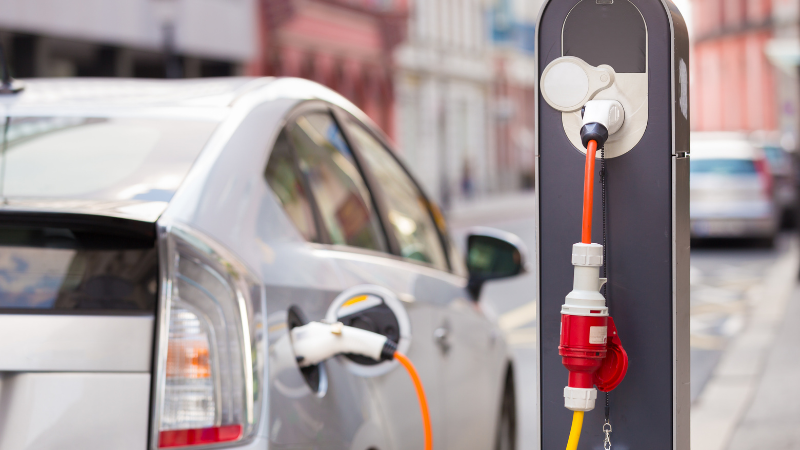This website uses cookies so that we can provide you with the best user experience possible. Cookie information is stored in your browser and performs functions such as recognising you when you return to our website and helping our team to understand which sections of the website you find most interesting and useful.
What is it like to drive an electric car across Europe? We have tested it for you

Electric cars are increasingly popular
Sales of electric cars are taking off across Europe. By the end of the decade, more than half of all new cars will be fully electric. Electric vehicles have a much smaller carbon footprint and cost less to run than conventional cars which is good news for both the environment and consumers. However, doubts remain as regards battery autonomy and the charging network. To address these doubts, Altroconsumo (Italy), Deco Proteste (Portugal), Test-Achats (Belgium), and OCU (Spain), respectively hit the road driving 100% electric cars for 660km, 720km, 342km, and 636km. The aim of the project was to test the public charging network and understand what still has to be done to make e-cars as practical as gas-guzzlers.
From this experience, we put into the test eight main demands that consumers have regarding electric vehicles.
Watch the video of our journey here.
Eight demands consumers have regarding electric vehicles
1. Homecharging
Easy access to cheap charging points should be a priority for governments. Companies should encourage staff to come by electric car and charge it at work. The law should promote and simplify the setup of private charging stations in existing and new buildings. One solution could be access to public funding for old building owners to install private or shared chargers.
The best incentives for electric mobility are to support the private charger network and free up the public network for long trips, occasional needs and consumers with no other solution, ensuring and simplifying the installation of private slow charging points.
2. Faster charging stations
In the public network, the main concern is the time needed to recharge. Regular chargers take two to six times longer to charge than a fast charger. There are very few fast chargers. No more than 7% of chargers provide 42 kWh and most of them are on motorways.
There needs to be many more fast chargers in towns and cities to ensure a higher turnover of users. One fast charger (42 kW) is equivalent to 2 to 3 regular chargers (11 kW). We believe there should be fewer slow chargers. Instead, cities should install and convert the public network to chargers with more than 22 kW and create fast and ultra-fast charger points.
3. Superchargers on motorways and main roads
We expected to find service stations with fast chargers on all motorways and main roads, but we came across very different scenarios. In Italy, not all service areas had charging stations. We were forced to leave the motorway to find the nearest station. On motorways in Portugal, a reasonable number of service areas already have fast chargers, but there is usually only one charging point per area.
The main highways and motorways should be equipped with fast and ultra-fast chargers at all service stations. All new stations should be above 150 kW. Each charging station should have enough charging points for the number of vehicles they expect there and always provide more than one single point.
4. No more than 50 km between charging points
Finding adequate charging stations along the way when driving an electric car is paramount. In some cases, we only found one charger in the main towns. Given the chance of it being in use or broken down, the next charging point may be a long way away in the next main town. In some areas, that can be more than 100 km. This is the average range of a small electric car. We advocate for all areas, even the ones with low density, to be equipped with charging stations. No areas should be left off from mobility electrification and in no case should we have distances greater than 50 km in our routes (extra urbans) without a charger.
5. A single card for all stations and suppliers
Except for Portugal, countries do not guarantee interoperability between charging stations, apart from occasional agreements. Consumers are forced to contract two, three or even more energy suppliers to ensure that they can use the next station. Consumers must be able to use the entire network, regardless of the brand, using just one energy supplier card.
6. One-off payment systems
Payment should be easy in each country and across Europe. Public stations should also provide the possibility to pay by debit and credit card.
7. Fair and transparent pricing
Drivers never know how much the charge will cost them. The price includes the electricity and different charger tariffs depending on time or power. Clear information about the price of energy and the tariffs must be guaranteed. There is a lack of regulation and standardisation of the criteria for tariffs and extra charges.
8. User Apps
Apps are a good tool for making charging more accessible and for helping you plan your trip. A common data communication protocol should be created among all charging stations. Only then will apps provide reliable data such as exact location, availability, operation, price and online booking about all operators.
Conclusion
Good surprises can be encountered when driving electric cars. Yet, as long as these 8 basic consumer demands are not met, electric mobility will fall short of satisfying all consumers.


